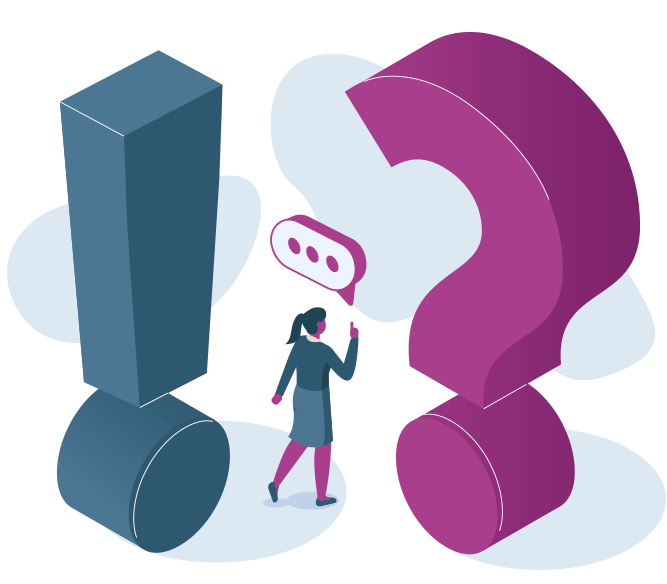I am a pedestrian hit by a car – what do I do?
If you are unfortunate enough to suffer personal injury in a pedestrian accident this year, it will be of little comfort for you to know that you are not alone. Figures released by the Department for Transport covering 2020 reveal 346 pedestrians died in road traffic accidents during the year. Another14,750 suffered a degree of personal injury after being hit by another road user.
Pedestrians are the most vulnerable road users, and the Highway Code provides confirmation. Indeed, the Code is soon to be updated to create a hierarchy of road users, with pedestrians at the top.
Other road users will be responsible for giving way to pedestrians in clearly defined circumstances. There is already an expectation that drivers and riders will take extra care when in the vicinity of pedestrians.
Pedestrians have no protection from being injured if involved in a road traffic accident. The chances of a pedestrian suffering serious injury or even fatal injury after being the victim of a road traffic accident are high.
What are the first things you should do as a pedestrian if hit by a car?
- The first thing to do if you are injured in any type of road traffic accident is to ensure you receive medical treatment. Your health has to be your main priority, and what action you take first will depend on the type of injury you suffer.
Suppose you suffer a serious injury that renders you unconscious or unable to move. In that case, you will be reliant on others involved in the accident or witnesses to it calling the emergency services to arrange for paramedics to come to the scene of the accident.
Even if you appear to be less seriously injured, it’s usually best to get someone else to make the emergency service phone calls for you. You will almost certainly suffer from shock after being hit by a vehicle at whatever speed. Injuries permitting, try and get to a safe place; move to the pavement or roadside whilst waiting for the emergency services.
Should your injuries not warrant an ambulance, ensure you get to A&E as soon as possible after the accident. Some injuries can appear relatively minor, only to end up more severe than was first thought. If you suffer any form of head injury, then you are advised to use the facility of an ambulance to take you to A&E straight away.
- Get someone to take down the negligent driver’s details and his vehicle registration number.
- Take photos of the scene of the accident. This may be done at a later date, but if someone else is able to take pictures immediately in the aftermath of the accident, though, so much the better. Get them to take a photo of the vehicle or vehicles involved, showing their registration numbers, if they can.
- Should anyone have witnessed the accident, make sure you or someone else obtains their name, address, and phone number on your behalf.
Making a pedestrian accident compensation claim is likely to be the last thing on your mind straight after the incident. Nevertheless, if you decide to pursue a road traffic accident claim, you’ll be glad you got the witness details. The evidence of independent witnesses can be significant, as they usually have no reason to be anything other than accurate in their recollection of the accident
- In most cases, the police will attend the scene of a pedestrian accident. They will gather details of all parties involved and any witnesses and take statements from them. The information collected may be included in a formal police report. If you are injured in a pedestrian accident, you might, at a later date, decide to bring an injury compensation claim against the driver who caused the accident. Your injury compensation solicitors will be able to apply for a police report to assist them in pursuing your accident claim against the negligent driver’s insurers.
How do I know whether I have good prospects of making a successful pedestrian accident claim?
Pedestrians are extremely vulnerable to getting hurt due to the negligence of other road users. The new highway code rules will reflect this. New Rule H2 will provide that Drivers, motorcyclists, cyclists, and horse riders:
- Should give way to pedestrians crossing, or waiting to cross, the road into or out of which the driver is turning
- MUST give way to pedestrians on either a zebra or parallel crossing
- Should give way to pedestrians waiting to cross on zebra or parallel crossings
- Pedestrians will have priority when on a zebra, parallel or at light-controlled crossings when they have a green signal.
- Cyclists should give way to pedestrians on shared cycle tracks.
- Only pedestrians may use the pavements. This rule is intended to tackle the problem of cyclists and scooter and e-scooter users whose riding on pavements poses a hazard to pedestrians.
So, the answer to the question posed is that if you are knocked down by a motor vehicle or other type of road user, and you suffer injury, you will have reasonable prospects of successfully bringing a pedestrian injury accident claim.
Tell me how pedestrian accidents usually happen
- Driver speeding
- Drunk driving
- Failing to stop at pedestrian crossings
- Right-hand turns (with the driver focusing more on getting across the other traffic lane than watching out for anyone crossing the road).
- Left-hand turns (with the driver focusing on traffic coming from the right at the junction rather than being alert to a pedestrian crossing the road on his left)
- Distracted from driving – often involving the use of a mobile phone by the driver
- Going through traffic lights on red
- Driver failing to keep a proper lookout is often coupled with excessive speed and applies particularly in built-up areas. Some people try and cross over roads by nipping between parked vehicles. Drivers should be alive to the possibility of pedestrians attempting to cross the road other than by pedestrian crossings.
Can a pedestrian ever be held responsible for a pedestrian accident?
Yes, of course. Whilst we emphasise the particular onus there is on road users to look out for pedestrians and not to put them in danger there are occasions where the driver or rider cannot be held responsible for an accident.
Suppose someone runs into the road without looking to see whether vehicles are present, and a collision between motorist and pedestrian occurs. In that case, the pedestrian may be entirely to blame for the accident. However, if the driver was speeding, he may still share some of the liability for the accident.
Pedestrian Accidents claims where both parties may be partly to blame for the accident are usually dealt with on a split liability basis. The pedestrian can’t make a claim, but their damages (compensation) would likely get reduced.
If you think you may have been partially responsible for a pedestrian accident, you should still call us at Mooneerams. Remember your initial call to us is entirely free of charge and without any obligation. Call us on 029 2048 and speak to one of our team.
What type of injuries can I claim compensation for after a pedestrian accident that was not my fault?
The simple answer is that you can claim for any injuries, physical or psychological, directly caused by the pedestrian accident you have been involved in.
The types of injuries most often sustained by pedestrians after being hit by a motor vehicle are:
- Broken bone injuries
- Head or Brain injuries
- Spinal injuries
- Serious cuts/lacerations
- Minor injuries – bumps, bruising, minor cuts. Although we’ve used the words minor injuries, it’s important not to minimise the effects of being the victim of a pedestrian accident. Post-traumatic stress disorder (PTSD) may still affect some victims of pedestrian accidents, even where the physical injuries were less severe than may have been the case.
- Fatal accidents – since pedestrians are the most vulnerable of road users, sadly, it’s of little surprise to read that, on average, 430 pedestrians are killed on British roads each year.
How much compensation will I get if I make a pedestrian compensation claim?
If you are unfortunate enough to be injured after being hit by a car or other motor vehicle, you will probably have claims for both of the following types of compensation:
- General damages (compensation) – compensation for personal injury, known as ‘pain, suffering and loss of amenity. Other items of general damage could be future loss of earnings, loss of congenial employment and handicap on the local labour market.
- Special damages – Losses sustained as a result of the accident. These include loss of earnings and other items that have a set value, e.g., cost of medical treatment or travel expenses.
You can find out more about the type of damages you may be able to claim for in a pedestrian accident claim by reading our detailed blog ‘How Much is the Average Personal Injury Settlement Worth?’
The amount of compensation you get for the injuries you suffer in a pedestrian accident, will depend on many factors, including;
- the type of injury,
- how the injury affects your life on a day-to-day basis,
- how long it will be before you recover from the injury
Asking a specialist personal injury solicitor who is also experienced in dealing with road traffic accident claims is the person best placed to take on your pedestrian accident claim, for you.
We understand why people who’ve been injured in a pedestrian accident might want to get a ‘ball park figure’ of what their injury claim is worth.
That’s where our Compensation Calculator may come in handy. (Please bear in mind that the figures quoted by the calculator are merely intended as a guide and do not constitute formal legal advice).
Child pedestrian accident claims
If pedestrians are considered the most vulnerable of road users, child pedestrians are at extreme risk of being injured in road traffic accidents. Children play on pavements and run into the road to pick up errant footballs or tennis balls, and they walk to school and have to cross roads.
However, experts consider children are not ready to cross over roads on their own until they are at least 8 years old, and many are not ready to do so even then. Some experts believe youngsters are not safe crossing roads until they reach 14 years of age.
The Highway Code recognises the dangers posed by motor vehicles to young people. Rule 204 warns motorists to be especially aware of children.
If a child is injured in a road traffic accident, a compensation claim can be made on their behalf by their litigation friend, who will usually be a parent or guardian.
The litigation friend can start claims on behalf of children at any time before the child reaches 18.
If court proceedings haven’t started before, when the child reaches 18, they can bring a claim claim on their own behalf and have three years to do so. It’s nevertheless advisable to start a child’s claim as soon after the accident as possible.
Do I need to use a solicitor for a pedestrian accident claim?
By the time you have reached this point in the article, we hope you have been provided with enough information to understand more about pedestrian claims and the criteria for bringing a lawsuit against the negligent motorist who caused the accident.
The claim will be defended by the motorists’ insurers before passing it on to solicitors if court proceedings start.
We know of many people who started their own claims only to encounter difficulties. Many claimants-in-person have come to Mooneerams and asked us to take their cases over. Insurers will do all they can to settle a pedestrian accident case on terms to suit themselves – not you! Mooneerams won’t let that happen.
Claims are time-consuming to deal with, and there are complexities in almost every case – even the ones that appear at first to be open and shut cases.
However, it’s our job to spend the time needed on a particular case. We are also experts, so we are confident in our abilities to deal with whatever problems or challenges a case throws up.
Why not let us deal with your claim? We are good at what we do and we’ll prove it to you!





